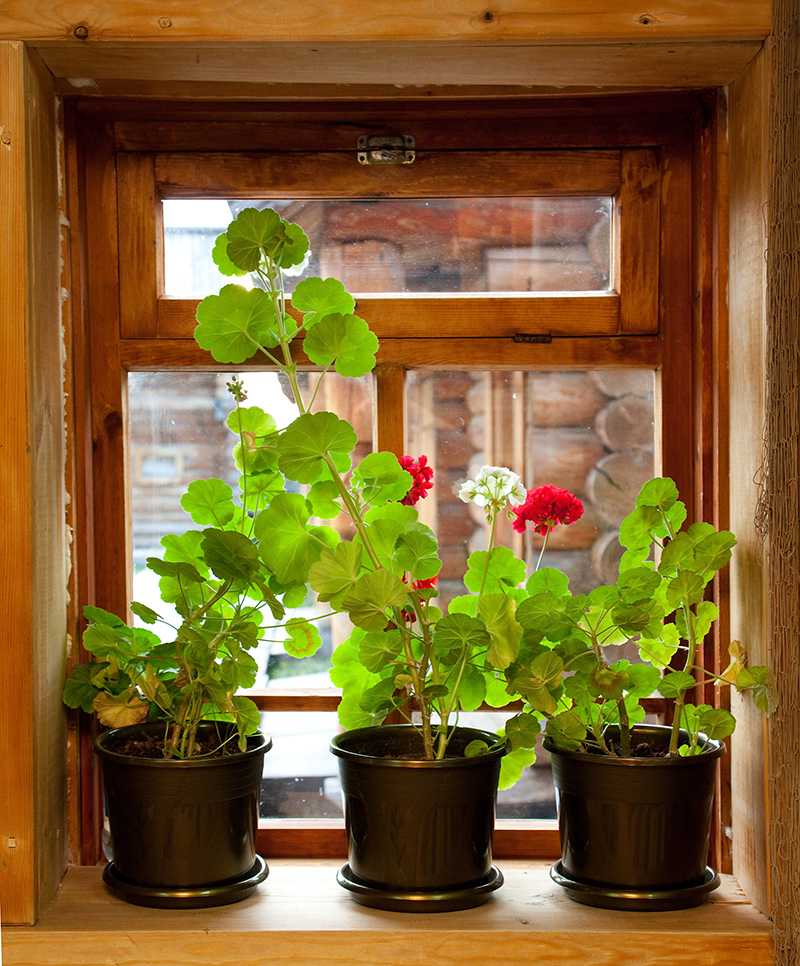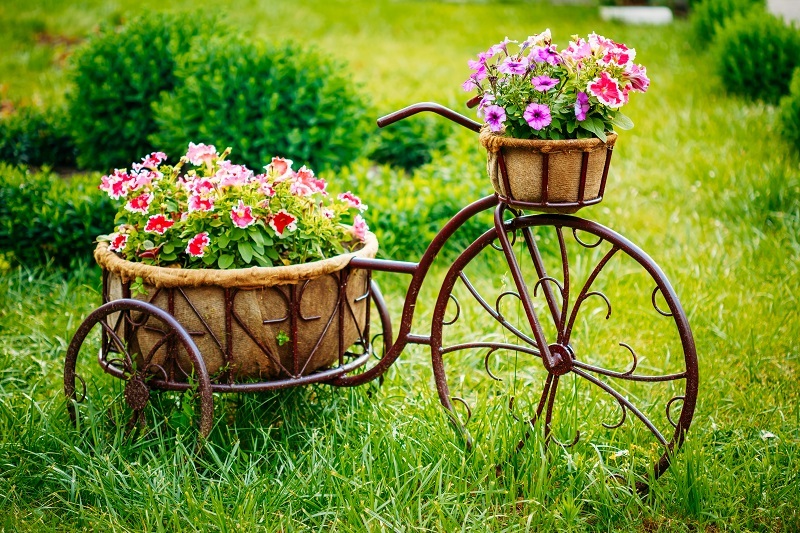Top Tricks for Hydrangea Health and Growth
Posted on 01/07/2025
Top Tricks for Hydrangea Health and Growth
Hydrangeas are among the most popular garden shrubs, loved for their lush, colorful flower heads and lush appearance. Whether you are a beginner gardener or a seasoned hydrangea enthusiast, achieving robust hydrangea health and optimal hydrangea growth often requires mastering a few specific care practices. In this comprehensive guide, we'll explore top tricks for hydrangea health and growth, ensuring your blooms are vibrant and your plants are thriving.

Understanding Hydrangeas: A Quick Overview
Hydrangeas belong to a diverse genus of flowering plants, with species and varieties suitable for different climates, sunlight conditions, and garden styles. The most common types include:
- Hydrangea macrophylla (Bigleaf Hydrangea)
- Hydrangea paniculata (Panicle Hydrangea)
- Hydrangea quercifolia (Oakleaf Hydrangea)
- Hydrangea arborescens (Smooth Hydrangea)
- Hydrangea serrata (Mountain Hydrangea)
Understanding your hydrangea type is the first step towards excellent hydrangea care and maximizing flower success.
1. Planting Hydrangeas: Setting the Stage for Success
Choose the Right Location
- Sunlight: Most hydrangeas thrive with morning sun and dappled afternoon shade. Panicle varieties tolerate more sun, while bigleaf and oakleaf types prefer shelter from the hottest part of the day.
- Soil: Well-draining, rich soil is critical for strong roots and healthy growth. Avoid waterlogged or heavy clay soils that can cause root rot.
- Spacing: Proper spacing prevents competition for nutrients and reduces risk of fungal diseases. Plant hydrangeas at least 3 to 5 feet apart, or according to the specific variety's mature size.
Soil Preparation: The Foundation of Hydrangea Health
- Amend soil with organic matter such as compost or well-rotted manure. This boosts fertility and improves drainage.
- Test your soil pH values. Hydrangeas can adapt but perform best with a slightly acidic to neutral pH (5.5-7.0). For blue blooms, acidic soils are ideal; for pink blooms, aim for neutral to alkaline soil.
- Mulch with pine bark or straw to conserve moisture and suppress weeds.
2. Watering Tips: Hydration for Happy Hydrangeas
Master the Art of Watering
- Consistent moisture is vital, especially during hot spells or when the plants are establishing. Aim to keep the soil evenly moist, but never soggy.
- Water deeply at the base of the plant to encourage deep root systems and prevent mildew on foliage.
- Morning is the best time to water--this allows leaves to dry before night, reducing the risk of fungal disease.
3. Feeding and Fertilizing Hydrangeas: Nourish for Growth
Balanced Feeding
- Apply a slow-release, balanced fertilizer (such as a 10-10-10 NPK ratio) in spring as growth begins.
- Avoid excessive high-nitrogen fertilizers, which promote leafy growth at the expense of blooms.
- Supplement with organic amendments like compost or worm castings for steady nutrient uptake and improved soil health.
- Pro Tip: Over-fertilizing can cause lush foliage but poor blooming. Less is often more!
4. Pruning Hydrangeas: Timing and Technique
Understand Type-Specific Pruning
The best pruning techniques for hydrangeas depend on the specific type:
- Bigleaf and Mountain Hydrangeas (H. macrophylla, H. serrata): Prune just after flowering, removing spent blooms and old wood. These types bloom on "old wood"--stems grown the previous year.
- Panicle and Smooth Hydrangeas (H. paniculata, H. arborescens): Prune in late winter or early spring before new growth begins. These varieties flower on new wood.
- Oakleaf Hydrangeas: Lightly prune after flowering, focusing on dead or crossing branches and shaping as needed.
General Pruning Tips
- Always sterilize pruning tools before use to prevent diseases.
- Remove any dead, damaged, or diseased stems promptly.
- Cut stems at a 45-degree angle above a healthy bud to encourage strong regrowth.
5. Optimizing Blooms: Color and Abundance Secrets
Hydrangea Flower Color Manipulation
One of the unique joys of hydrangea gardening is changing the flower color. Here are some tricks:
- Blue Hydrangeas: Lower soil pH by adding aluminum sulfate or organic matter like pine needles.
- Pink Hydrangeas: Raise soil pH by adding garden lime yearly.
- Test your soil annually to track pH changes and adjust your amendments accordingly.
Boosting Hydrangea Bloom Production
- Deadhead spent flowers regularly to encourage new blooms.
- Avoid over-fertilizing, which can lead to leafy plants with fewer flowers.
- Prune as recommended for your specific hydrangea type. Incorrect pruning is a leading cause of missing blooms.
- Provide a balanced fertilizer in early spring and, if needed, a phosphorus boost (like bone meal) to enhance budding.
6. Protecting Hydrangeas from Pests and Diseases
Common Hydrangea Pests
- Aphids, spider mites, and scale insects are the most common pests. Treat with insecticidal soap or neem oil if infestations occur.
- Encourage natural predators like ladybugs and lacewings to help control pest populations.
Preventing Diseases
- Maintain ample airflow around each plant to prevent fungal diseases like powdery mildew or leaf spot.
- Water at the base to keep foliage dry.
- Remove and dispose of diseased leaves promptly--never compost infected plant material.
- Consider a fungicidal spray in humid, wet conditions if disease persists.
7. Overwintering Hydrangeas and Seasonal Protection
Winterizing Hydrangeas
- Mulch heavily (2-4 inches) around the base of the plant in late fall to insulate roots against winter's chill.
- For bigleaf and mountain hydrangeas in very cold climates, wrap plants in burlap or a frost cloth after leaf drop to protect buds.
- Avoid pruning after midsummer to ensure flower buds form and are not accidentally removed.
Spring Wake-Up
- Gradually remove winter protection as temperatures warm and growth resumes.
- Check for winter damage and prune away deadwood in early spring.
8. Encouraging Lush, Green Foliage
- Water regularly but do not allow the soil to stay waterlogged.
- Feed with a complete, balanced fertilizer in early spring, and add organic mulch each season to replenish nutrients naturally.
- Ensure good drainage and adjust watering frequency during prolonged rainy or dry periods.
- Check frequently for leaf yellowing, which might indicate nutrient deficiency or poor drainage.
9. Propagation Tricks: Expand Your Hydrangea Collection
Easy Propagation Methods
- Stem Cuttings: In early summer, cut a non-flowering stem below a leaf node, remove lower leaves, dip in rooting hormone, and plant in moist potting mix.
- Layering: Bend a low stem to the ground in early spring or late summer, bury a part of it, and keep moist until it roots. Detach from the mother plant and transplant when established.
Both methods let you multiply healthy, robust hydrangeas for your garden or to share with friends.
10. Hydrangea Maintenance Calendar: Month-by-Month Guide
- Early Spring: Prune as needed, feed, apply mulch, inspect for winter damage.
- Late Spring: Monitor for pests and diseases, ensure consistent watering.
- Summer: Deadhead blooms, water during dry spells, watch for heat stress.
- Late Summer/Fall: Stop feeding to prepare plants for dormancy, increase mulch after the first frost.
- Winter: Protect from severe cold where necessary, observe soil moisture during dry winters.
Frequently Asked Questions About Hydrangea Growth and Health
- Why are my hydrangea leaves turning yellow?
- This could be overwatering, poor drainage, or a sign of nutrient deficiency--primarily iron or nitrogen. Adjust watering and fertilization habits as needed.
- Why didn't my hydrangea bloom this year?
- Common causes are improper pruning (removing wood with flower buds), late frosts killing buds, or too much shade. Review your pruning timing and plant location.
- How do I keep hydrangeas flowering for longer?
- Regular deadheading, consistent soil moisture, proper feeding, and avoiding intense afternoon sun can prolong blooming.

Conclusion: Hydrangea Health and Growth at Its Best
Hydrangeas reward gardeners with abundant, beautiful flowers and lush foliage when given the right care. By following these top tricks for hydrangea health and growth—from strategic planting, precise watering and fertilizing, tailored pruning, to disease prevention and winter protection—you'll ensure your hydrangeas thrive year after year.
Remember, the key to successful hydrangea gardening is observing your plants, adjusting care as needed, and enjoying the ever-changing beauty of these garden favorites. With a little attention and the right techniques, your hydrangeas can be the highlight of your garden each season!
References & Further Reading
- University of Minnesota Extension: Hydrangeas
- Royal Horticultural Society: Hydrangea Growing Guide
- Gardener's Supply Company: How to Grow Hydrangeas
Latest Posts
Discover how birth month flowers tell stories through their meanings
Reveal the Petal That Complements Your Character Perfectly
Master Flower Preservation with These Three Easy Techniques





